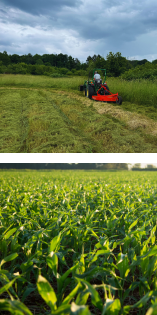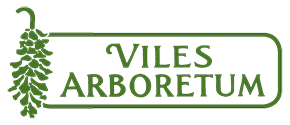Viles Arboretum has begun the process of creating a quarter-acre wildflower meadow to support monarch butterflies and other native pollinator species. This project is located between the Visitor Center and the Heritage Apple Collection, in the former site of the Community Garden. We'll be planting Eastern columbine, golden alexanders, black-eyed Susan, turtlehead, perennial gaillardia, great blue lobelia, wild bergamot, Culver’s root, spotted Joe-Pye weed, boneset, Maximilian’s sunflower, narrow-leaved mountain mint, and New England aster.
The primary aim is to enrich and diversify pollen and nectar sources by planting native, perennial wildflowers. The field has been dominated by non-native and invasive species like timothy grass, Canada thistle, tall fescue, and crabgrass, which offer little to no benefit to Maine's native insects. There is a small population of milkweed, but it is present at a lower-than-desirable density.
Establishing wildflowers, especially natives, is a complicated process in areas dominated by aggressive non-native plants. It requires more than simply spreading seeds in a field. Here's how we plan to get there:
- Mow & Light Tilling: At the beginning of summer, we mowed the field and lightly tilled the area to expose and dry out the roots of existing plants, creating a blank slate for the cover
 crop.
crop. - Planting Cover Crop: Next we planted an aggressive cover crop of Sudangrass. Chosen for its ability to thrive in summer heat and drought, our hope is the Sudangrass will shade-out the existing plants, preventing them from developing strong roots and seeding. If successful, we should have a mono-culture of tall Sudangrass by early fall, which will then be cut back and left to mulch in the field, smothering any remaining plants.
- Final Tilling: We'll do another round of light tilling to disturb the soil surface enough for wildflower seeds to find suitable spots to settle.
- Seeding Wildflowers: Many native wildflowers require a cold stratification period to germinate, so seeds will be spread in the late fall or early winter.
- Surface Compaction: We'll use a roller to compact the soil, which ensures that the seeds have good contact with the soil, prevents seeds from being washed or blown away, and stabilizes the seeds in place, all of which increases the likelihood of germination.
- Wait & Hope: If our efforts are a success, we should see a blooming field of wildflowers next year!


